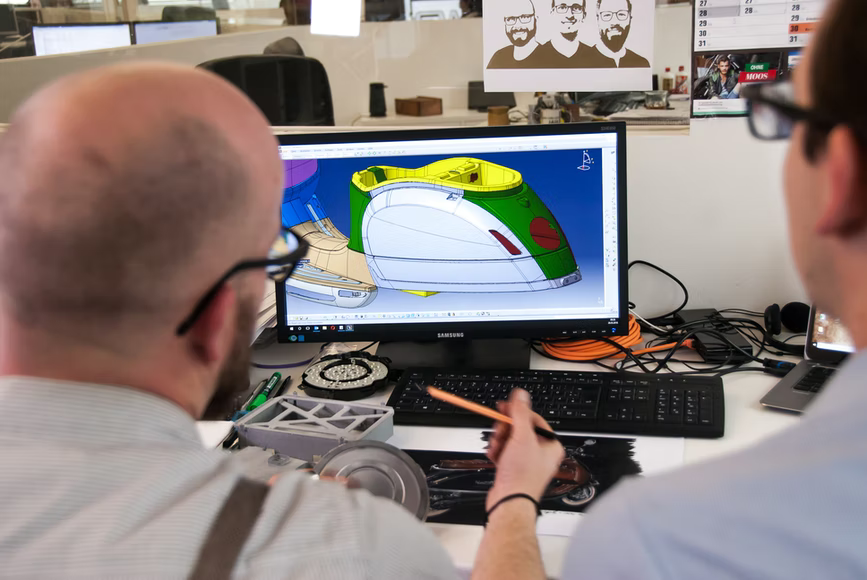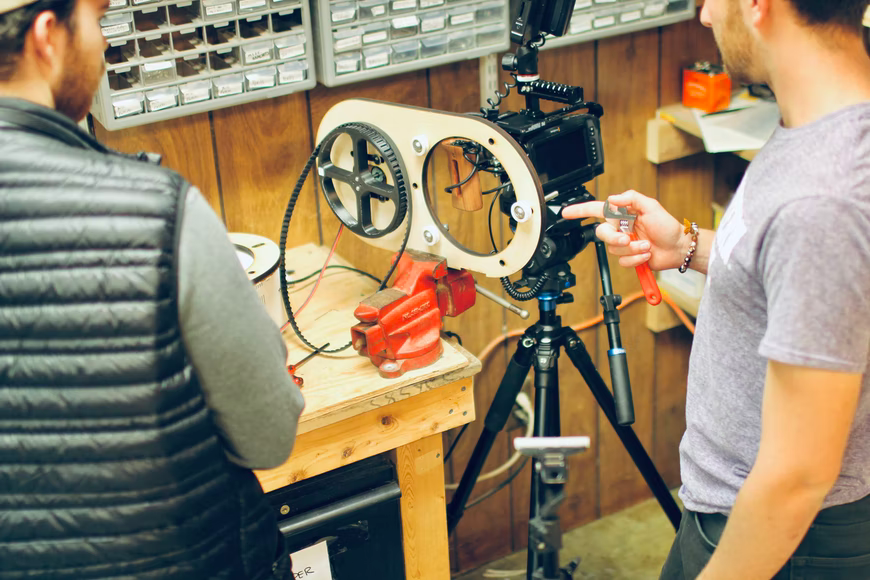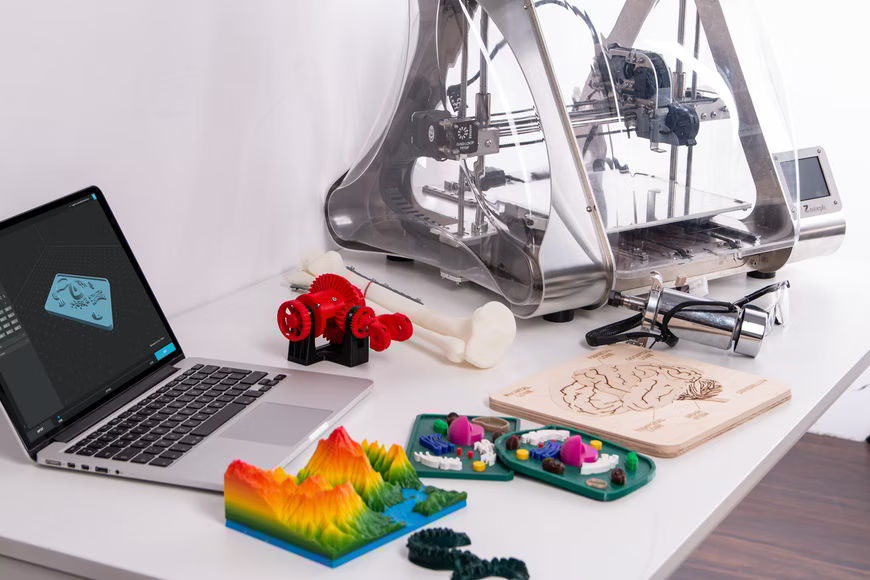The Essence Of Creating Functional Prototypes
Each product opportunity presents a challenge to innovators as they must validate its practicality and functionality. When introducing a new product in the market, the company must define a budget for full-scale production. The product development teams deal with uncertainties surrounding the success of a product. Creating functional prototypes is a critical and beneficial stage of the product development process.
In this article, we explore the benefits of prototyping, discuss how to optimize the creation of functional prototypes, highlight prototyping techniques for hardware and software products, and the critical steps to follow when prototyping.
What Are Functional Prototypes
A prototype is a simulation, model or sample version of the end product for developers to test and validate designs. A functional prototype is the most basic representation of the actual product. It showcases the working principles, design alternatives and applicability of a solution. It enables the product development teams to evaluate the actual cost of production, manufacturability, choice and strength of manufacturing materials, ergonomics and lead time.
Although innovators spend a lot of time finding solutions and developing consumer products, few reach the target markets. Disregarding the prototyping stage increases the probability of a product failing. Designers utilize prototypes to correct errors and refine designs at the early stages of development.
Building functional prototypes is essential, whether you are working on embedded systems, physical consumer products, medical devices, automotive parts, or concept models aerospace applications.
Creating functional prototypes in the design process enhances the creativity of design teams. They rely on already available materials to build cheap scale models of the end product. The development teams constantly iterate designs, changing small parameters until they produce a functional part or assembly that meets user expectations.
Prototyping Methodologies
Innovators use different techniques to solve everyday user problems. One will analyze a problem and resolve it to develop a software solution, while another sees it as an opportunity to create a physical product. It informs the choice of prototype tools that the innovator will utilize for testing concepts and finalizing products. The differences in problem-solving and prototyping approach set aside an industrial design company from its competitors. The most popular prototyping methodologies are:
Paper prototyping
The product development teams use manual methods (hand sketching) to elaborate designs concepts. The emphasis is on the flow of ideas instead of aesthetics and actual working mechanisms of the product. They are an inexpensive way for the development team to simulate user flows. Paper prototyping is only practical during the early stages of development since it does not evoke the emotions and reactions of the end-users. The development team gathers insufficient insights from the target audiences and does not provide an exhaustive way for validating ideas.
Digital prototyping
An advanced prototyping methodology that product development teams use to showcase the technical details of the final product. It leverages digital design tools such as 3D CAD, Figma, and Adobe XD. Development teams use these prototypes to evaluate how users interact with the final products.
After digital prototyping, teams working on physical products create functional prototypes. They convert 3D designs into printable formats for 3D printing, CNC machining, or any other additive manufacturing process.
For software products, the development team begins the coding exercise. The end products are interactive user websites, mobile applications and software solutions.
Benefits of Functional Prototypes
Functional prototypes are scale models of the final products. They provide a cheap option for innovators to examine the form and test the functionality and fitness of a consumer product and its ability to solve a specific user problem. Innovators can conduct functional tests and observe their reliability or performance under diverse application conditions. It enables the development teams to identify and correct design issues and usability errors. That way, innovators can refine designs before launching products.
Functional prototypes provide an easy way for the innovators to communicate solutions to stakeholders and gather feedback from the target audiences. The product development team does not only conduct in-house product tests. They distribute the samples to their customers for validation. The stakeholders describe their challenges when using the proposed solutions, and the development teams draw inspiration from these challenges to develop better solutions.
Companies using rapid prototyping enjoy better lead time than those relying on traditional manufacturing techniques. They can quickly simulate the mechanical function, strength and performance of different components. The companies use advanced manufacturing methods to produce high-precision parts and verify dimensions and tolerances. It enables them to select cost-effective manufacturing alternatives that will guarantee quicker penetration to consumer markets.
Steps For Creating Functional Prototypes
Invention design and the product development cycle involve several interdependent activities. There is a lot of research and planning when developing new or improved consumer products. The human and financial resource requirement for each product varies depending on the complexity and size of the project. A mold design may require a small team and a few days to complete, unlike a wind tunnel testing project that takes months. Although the activities have their differences, they all go through similar processes. The typical stages for creating functional prototypes are:
- A shift from paper to software design
- Create user interfaces or build mockups
- Develop virtual prototypes
- Add input/output devices to prototypes
- Develop algorithms
- Test prototype
- Initiate a pilot deployment

Develop Virtual Models To Evaluate Product Usability.
- A shift from paper to software design
In the design process, everything begins with a rough sketch. The innovator needs to understand how to convert an innovative idea into a practical or tangible solution. The innovator or the product development team defines the requirement of the project and the objectives they intend to meet by developing functional prototypes. The innovator needs to transfer all this information to design software. Break down all the activities into manageable pieces. Where possible, create a flowchart that indicates the flow of processes. Define how the team can evaluate progress and transition between activities.
- Create user interfaces or build mockups
At this stage, the development team develops user interfaces (UI) or begins building simple product mockups. The innovator uses these interfaces or mockups to showcase functionality. The mockup acts as a tool for collecting feedback and evaluating the possibility of adding functionality or modifying physical appearances.
- Develop virtual prototypes
Innovators begin developing virtual prototypes by combining the principles of mechanical modeling, product simulation and control design. The development team uses different 3D CAD software to evaluate the mechanics of systems and verify their compatibility with control signals.
Virtual prototyping is essential when designing physical products. It enables designers to foresee and lower the design risks associated with mechanical components. It speeds up the design process since innovators can perform design iteration based on real-time stakeholder feedback. Virtual prototyping is one way to involve the customer in the design process.
The designer can connect the 3D CAD model to different control signals and simulate its operation based on multiple real-world scenarios to evaluate how reliable and efficient the product responds to change.
- Add input/output devices to prototypes.
All the above stages of prototyping are conceptual. At this stage, the innovator begins building the physical prototype after validating a concept and simulating it in a virtual environment. Such a model facilitates the implementation of control signals or software solutions relevant to the design. The design needs to integrate sensors, input and output devices.

Build A Prototype Using Available Resources.
The I/O devices allow the machine to interact with users in the real world and relay meaningful data between the device and human interfaces. It is a delicate stage since the I/O devices are costly. Any changes to the design in the future put these devices at risk. The innovator should plan accordingly to avoid financial constraints associated with purchasing the devices every time the design changes.
- Develop algorithms
Innovators working on automated products need to develop foolproof algorithms to guide their operations. Algorithms define the limitations of the functional prototype. They describe how the different parts or mechanisms interact and respond to user inputs. They also dictate the hierarchy of processes and the execution of diverse product functionalities.
- Test prototype
After building a functional prototype, the team tests its functionality at full-scale. At this stage, the developer and target audiences subject the hardware and software components of the product to real-world conditions. The developer evaluates the product and tries to identify any problems that may impede the long-term use of the product. They also measure data transfer between devices.
- Initiate a pilot deployment
After collecting feedback from all the above stages, the innovator identifies pertinent issues and resolves them as soon as possible. They then begin transitioning from testing the functional prototype and start planning for the deployment of the product. It involves production planning and distribution in high-volume to meet consumer demands.
Which Manufacturing Methods Are Available For Creating Functional Prototypes
Rapid prototyping is proving essential in the modern-day product development process. Companies are competing to deliver delightful products to their customers. Every company has a tight schedule between identifying a market opportunity, creating prototype designs, launching and introducing new products or services before competitors. When it comes to showcasing functional prototypes, innovators strive to communicate the details of their products simply while describing technical details using realistic scale models.

Using 3D Printers To Create Realistic Prototypes.
Companies are leveraging advanced manufacturing techniques to enhance the functional prototyping process, improve the quality of demonstrational products, enhance sustainability and usability of locally available materials and minimize lead time. Popular rapid prototyping techniques include:
3D printing
Refers to a set of computer-aided, additive manufacturing techniques for depositing, joining and solidifying materials to form three-dimensional objects. The manufacturing technique produces the exact design of products as they appear in the CAD software model. Suitable for creating functional prototypes using plastics, biomaterials and composites.
Selective Laser sintering
A rapid prototyping technique suitable for creating functional product models using nylon or polyamide materials. The manufacturing unit has a laser head that generates the power required to fuse and compact powder material by heat or pressure without melting it.
CNC machining
It is a precision machining manufacturing process that relies on pre-programmed computer software to control the movement machine tools. They produce 3D prototypes as they appear on CAD models. Suitable for fabricating metal, plastic, glass or nylon products. Unlike other manufacturing techniques, CNC machining is a subtractive manufacturing process.
These processes are essential as they give the designers and developers the freedom to refine and replicate designs as many times as possible to ensure final products meet the users’ expectations. They enhance flexibility and are scalable. An innovator can develop a functional prototype, evaluate its market suitability and begin full-scale production using the same set of manufacturing equipment and material.
Final Words
Functional prototyping is a vital process in the product development process. Designers need to understand that even the most innovative solution may turn up as a failure if they do not eliminate or rectify errors in the early stages of development. Product development teams should perform rigorous functionality tests and allow the end-users to test physical prototypes.
Developing functional prototypes does not have to cost a lot of money. The innovator should focus on communicating the working mechanisms of different products using readily available materials. The innovator has access to several fast and low-cost manufacturing techniques to ensure they deliver timely solutions.
Like all other product development stages, the prototyping stage requires sufficient planning. Prototyping is not only limited to building functional models. It is a stage that involves continuous modification of product designs, collection of stakeholder feedback, and choosing the best manufacturing materials. Every designer should consider developing prototypes before rolling out full-scale production.
